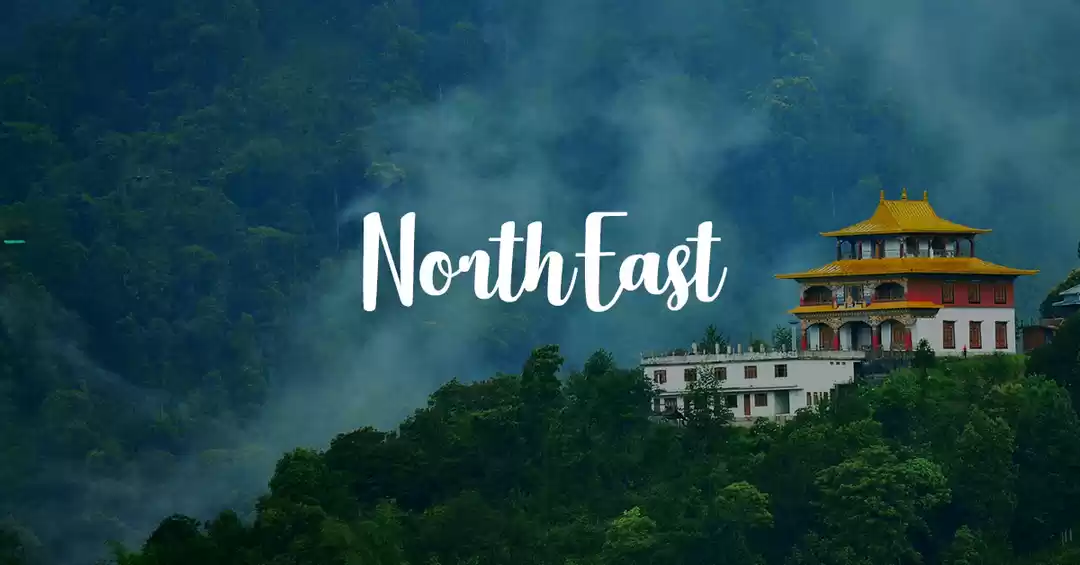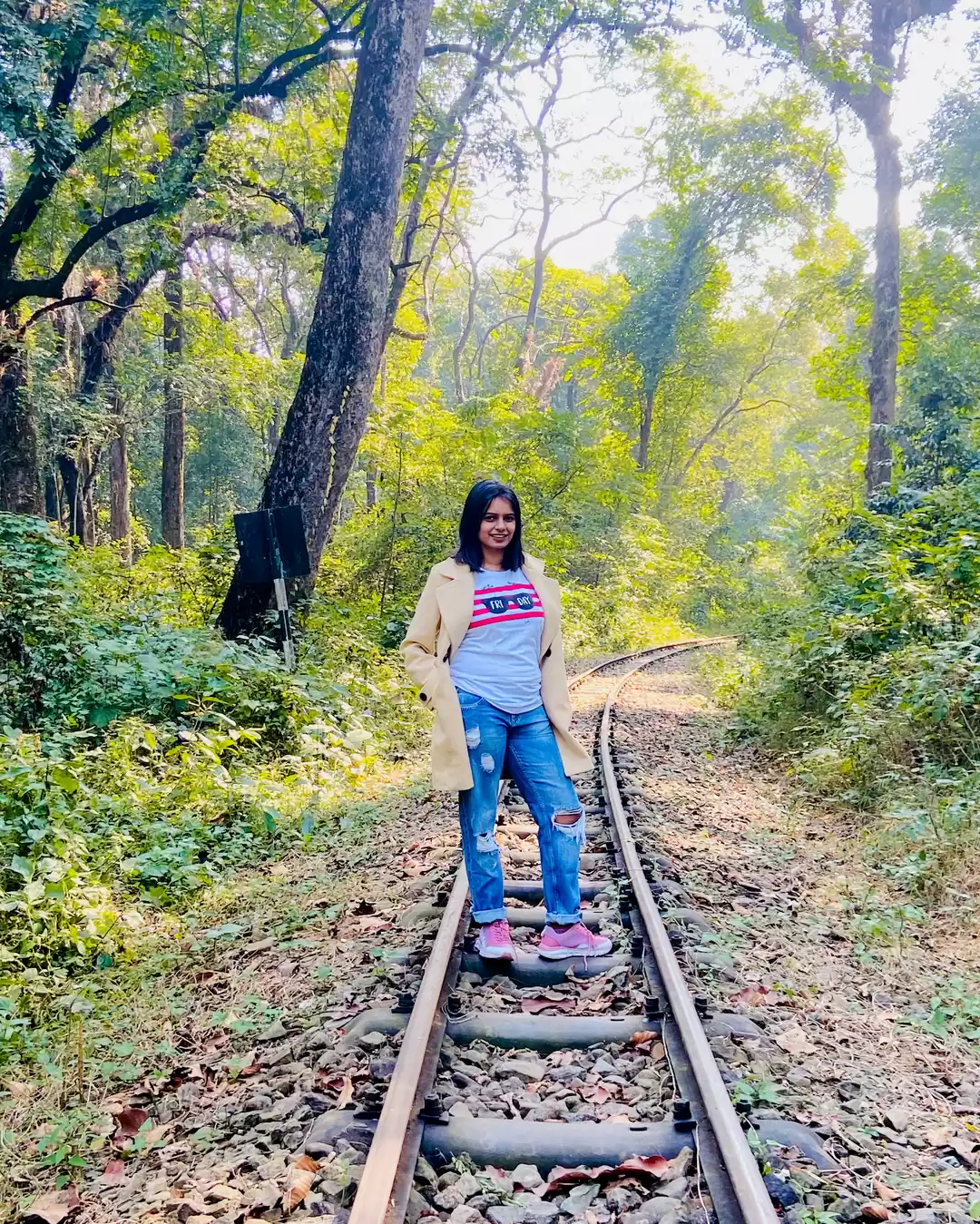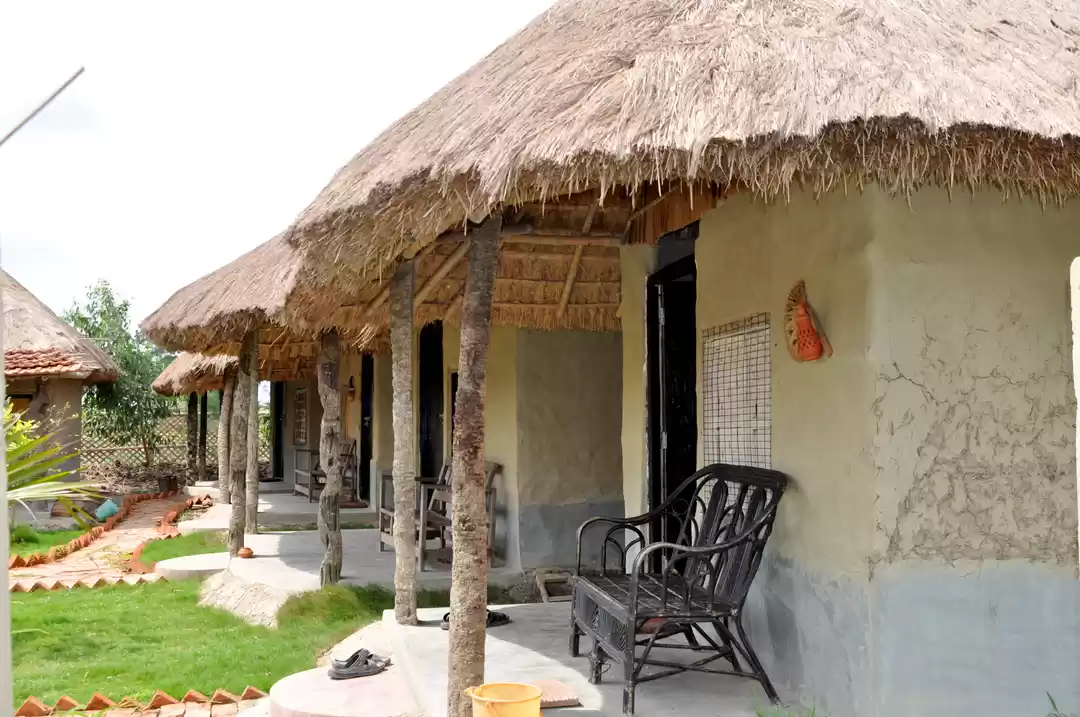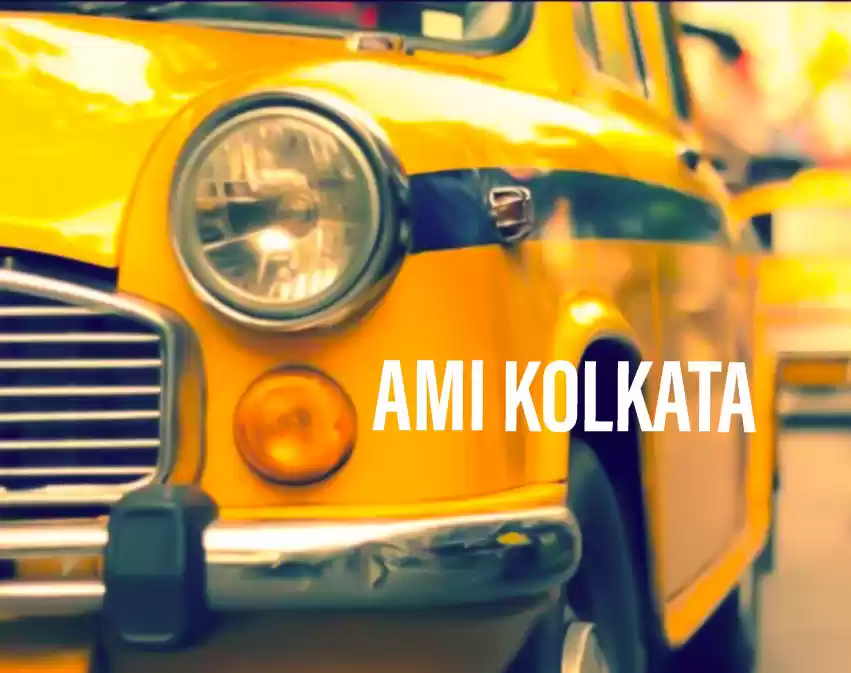
We arrived at Howrah station to visit Calcutta, the second largest city in India. We took a taxi after standing in the long queue of the prepaid taxi, for a journey of half an hour. Traffic is very slow at times, where traffic jams occur. And the traffic lights take a long time to change. I was already seeing the panorama from the taxi of shopping centers, and multiplex cinemas in Kolkata.
Day 1 in Kolkata
We reach one of the budget hotels in Kolkata. After negotiation we book a room and for what we have seen it is very good and clean. We leave the backpacks at the hotel. We have breakfast at a place in Sudder Street with puri, sabzi and tea. We return to the hotel, after going around the Sudder area.
The market is a mess of alleys that is not bad, because as soon as we enter, a man guides us, taking us to the store we need. This walk ends by tiring our whole body. So we return to the hotel to rest. We bought a sandal. Here it is also very hot, especially at noon.
We enter the Indian Museum. The rooms are dusty with bad lighting, lack of control of humidity and temperature. In the room of mammals, there are some that have a horrible expression and the insects are especially dirty, with insects without wings. There is an Egyptian room and mineralogy rooms full of stones. Nearby was a model of the Tower of Silence, a very interesting funerary system.
For the Parsis, it is a kind of cemetery, where they left the dead exposed to the elements, being the food for vultures and crows. There is a room where they have a copy of the Bharhut gate, a landmark that is close to Satna. We left the museum and we continue to take a walk. For lunch we eat, not without hunger, some fried rice with eggs and potatoes.
We look for the ticket to Darjeeling, but the agencies charge high and also have some demands that we do not end up liking. In all the entrances they have, at the entrance, the lemons and chilli hanging as a talisman. We keep going around the street market near Chandni. They sell from American to Bollywood movie DVDs.
A taxi, leaves us at the Reservations Office near the GPO building at Fairlie Place where we get the ticket after only half an hour of waiting. I remember the scenes of effusive affection seen on the waterfront in Millennium Park. We went to the Howrah bridge, the busiest in the world, where it is forbidden to take photos. We also visit the nearby colorful Mullickbazar flower market, which is under the bridge.
After a tired, but interesting walk of almost two hours, we arrived at the Marble Palace in less than 10 minutes in the taxi. It really looks like an old building in marbles and everything in the dark. With another taxi, we reach the Girish Park Metro Station. After two more stops we left at Central Metro Station. There we ask a little man and he accompanies us to the same street we are looking for. There are many shacks made of plastics and wood.
We bought a flute that sounds like a saxophone, and on the way to the hotel we took chicken biryani and a singara. We walk through the Park Street, which at night is very lively, and there was even one of those giant LED screens, typical of New York. The street is full of super expensive restaurants, bars and nightclubs like Trincas, Mocambo, Moulin Rouge, Flurys, Shiraz and Peter Cat. There are also some new ones like Barbeque Nation, Hakuna Matata and Marco Polo. I return to the hotel somewhat intoxicated with beer.
I start to have a chat with the receptionist, a guy of about thirty years and a clever face. We talked about the Bengali weddings because in my hall are the noisy guests of one. He informs me that the celebration lasts at least twelve hours. In the National Geographic channel we see a documentary and rest.

Day 2 in Kolkata
At dawn I can see the entire city just by walking out the door of the hotel. I pass by the citizens park or the Mohor Kunja and the monument to the queen Victoria in the maidan area, the green lungs within this polluted chaos. The white palace is reflected in the waters of the pond and the impression is of virtual decoration of as perfect as it turns out.
I pass by Sambhunath Pandit street to see a perfect portrait of Calcutta. In two hundred meters I have everything that this city can offer. There are beautiful colonial buildings, shops, restaurants, a fruit market, pastry shops, temples and traffic.
After breakfast we left for the Kali temple in Kalighat. According to the Kolkata travel guide, it is the most sacred place in Calcutta. The taxi leaves us very close to the temple. Of course there is a queue to see the idol and the priests ask for a donation (admission is free).
We went out and bought a photo of Kali. We get to the metro and go to the Kolkata tourist information centre (which is hidden on the other side of the city) near Victoria Memorial. There we get and some brochures with information about Sikkim and Darjeeling.
We passed by the Aurobindo house, which is very close to Birla Planetarium. We enter the Victoria Memorial. It is a white monument in English style with a huge dome and rooms devoted to painters and explorers. Other rooms exhibit modern art from a local school. We bought a map of Calcutta. Then we walk to the New Market area. We enter a restaurant where the food is again extraordinary. We have tandoori chicken, naan and rice.
From there we went to the Botanical Garden in a car, crossing the Vidyasagar Setu or the second hooghly bridge. This garden in Howrah serves as an urban park. It is a large expanse of trees from different countries (almost all tropical in the northern hemisphere). It extends over many hundreds of meters and is a haven of peace.
The sun plummets and there are few shadows that can be taken advantage of. So, after trying to see some curiosity, we go straight to enjoy the jewel of the garden, to the Great Banyan Tree. It is a variety of Bengal fig tree, which has the distinction of not having a central trunk. The whole living being is sustained by its great roots.
Up to 600 branches fall to the ground giving it the subjection of true natural pillars. It is beautiful and very interesting to see since we try to discover the trunk, but there is not. The oldest part is believed to be more than two hundred years old, although ancient writings give a thousand years to this botanical curiosity.
We return to Sudder Street by taxi. We eat a pizza and some spring rolls, and non-alcoholic beers. We meet a nice lady who comes from Kathmandu. We took a taxi to the MP Birla planetarium. Because we did not wait for the session in English, we got into the session in Bengali. The planetarium is very austere, but I liked it a lot. The audiovisual does not kill but I liked the representation of the stars in its huge dome. The photo exhibition was very old. In short, it was great.
We take a taxi to the hotel. We dined at the place where many of the workers gather in this area of Calcutta. We have mughlai paratha, aloo dam and beer. The entire meal was very rich. Before going to the hotel, we bought a beer in a store that is on the corner. It is an odyssey to get a beer, since there is a huge queue on the stairs waiting for the turn or sneaking between the people.
Day 3 in Kolkata
I'm sweating, though my eyes are the only thing I move. We walk to the far end of the station. On the way from the train station to the hotel we enter the city center. Some of the streets are blocked. Plenty of colorful, blinking fairy lights illuminate Calcutta. Although it is already late, whole streams of people are on the move.
Policemen in white uniform and black boots steer the traffic. Music is shrilling from big speakers. We are just stumbling into the biggest and most important festival of the year, as we are here during Durga Puja. The festival serves to worship the goddess Durga. In the evening we start our Durga Puja pandal hopping. The city shines under a deluge of luminous garlands cascading down most buildings.
Together with festively dressed people we stroll through the decorated city. Women wear their most beautiful saris. The colorful fabrics and their golden jewelery sparkle in the light of the lanterns. Everywhere sizzles fresh food from street stalls and special sweets are sold. In the meantime, I take out my camera and take snaps as I move through the lively streets and lanes of this mega-city.
In the temples, on the streets, in pandals and even in the narrow, winding streets small and large stages are built with beautifully decorated Durga altars. They are handmade from wood, bamboo, fabrics, clay and papier-mache. Each altar is unique.
The arrival of the goddess is celebrated with sumptuous processions. The religious rituals, drums and music roar through the whole of Calcutta until after midnight.

Day 4 in Kolkata
We move from Chandni Chowk to a quiet residential area on the southern outskirts. I have a Bengali Thali. A smiling lady in her beautiful sari serves us a round tray with several metal bowls. They are filled with luchi, aloo dum, cholar dal and pulao. There is also hot paratha and kosha mangsho with mutton. For dessert, we have pantua, the golden brown slime balls soaked in thin syrup.
This time we experience the city quite differently. Although Goddess Durga is turning everything upside down, there is no chaos. The roads are in good condition. Traffic lights regulate the traffic without us being stuck in a traffic jam. We drive several times through Calcutta and are surprised how fast that is possible.
Today the Durga Puja festival is coming to an end and the Bijoya Dashami is being celebrated. In the evening, people escort hundreds of large and small Durga statues to the Ganges. Five minutes from our inn we can witness a colorful spectacle. Nobody stays home at this time. Women prepared the offerings for Durga, Ganesh, Kartika, Lakshmi and Saraswati. The sindoor of course, but also the sweets to feed them, the leaves to clean their face, chest and feet and pan, wrapped in a betel leaf.
Women, of all ages and conditions, put on their best sari and go to the places where the idols are exposed, to make offerings and apply sindur on the representations of the goddess and the deities that accompany it. And we started to make an endless queue, passing from one row of chairs to another while the first rose to the altar cleared of flowers that morning.
Each woman performs the same ceremonial at each of the five altars. Married women have painted their faces with Sindur, the red, consecrated color powder during the Sindur Khela. We can then see, everywhere, married women express their joy, dance, and apply liberally marks of vermilion on the forehead and cheeks, supposed to confer happiness and longevity.
The most important idols are carried on the backs of men on bamboo poles, often accompanied by a fanfare, in the middle of a merry jostling, but the vast majority of them arrive from different quarters on trucks, in an unbroken line that will extend late into the night.
Each idol is accompanied by his devout worshipers, and once the truck reaches the top of the steps leading to the Hooghly, an arm of the Ganges flowing through Calcutta. The unloading of the goddess gives rise to scenes of effervescence and jubilation.
Hardly unloaded from the trucks, the idol bearers make them perform five traditional tricks in the midst of an enthusiastic crowd, while at the drum, the women perform a few dance steps. Then comes the descent of the steps to the river, which gives rise to a beautiful jostling, each trying to immortalize the image of the Goddess before it falls into the waves.
The excitement is at its height and one strives to touch the face of the deity one last time before she begins her journey. Meanwhile, a little further, with infinite precautions, the men have deposited a giant effigy on a boat. Arrived in the middle of the river, they rock it in the silty water by means of long bamboo poles. In an instant she disappeared and a long clamor greeted the departure of Maa Durga for the trip that will bring her back to her parents, there in the mountains of the Himalayas.
On the shore, emotion squeezes the audience. Between two arrivals of idols, one will immerse oneself in the river and one splashes copiously of sacred water to the dismay of the cameras which capture the scene. Already another glittering idol is ready for the great aquatic journey, soon followed by the kind and faithful Ganesha, the everlasting companion.
By sneaking boldly into the fray and skillfully playing elbows, we still have a small chance to catch a glimpse of this marvelous and colorful world of gods and goddesses before it finally sinks into the murky water. Immediately afterwards, young men fish out the sad figures again. What has just sparkled so beautifully and was deeply worshiped, ends shortly thereafter as waste. We also say goodbye to Durga.





































